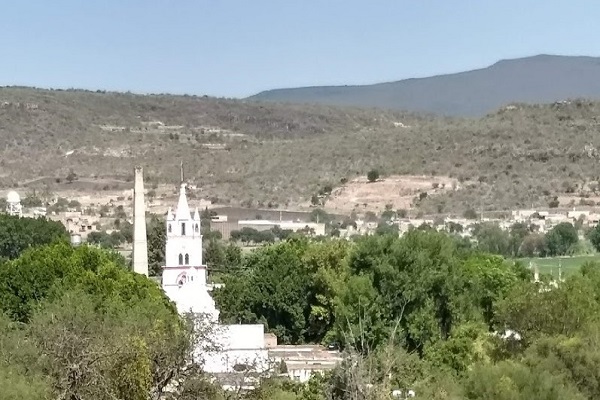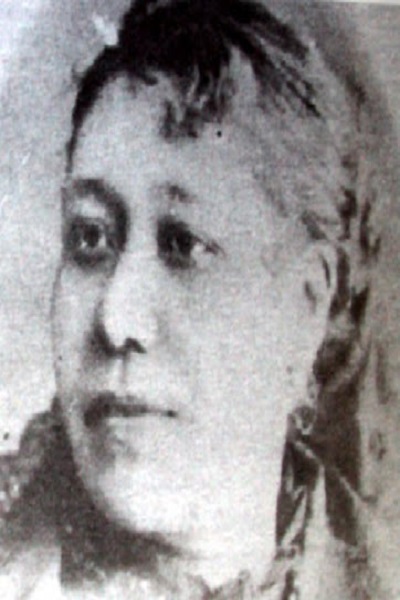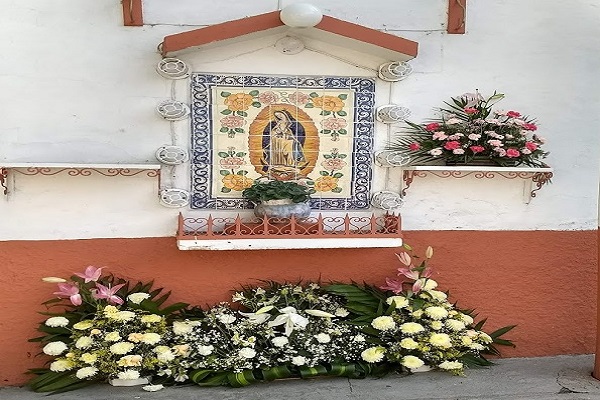For years I’ve been volunteer teaching dance in Escobedo, about thirty minutes south of San Miguel and I was long intrigued by a street that ran along the Laja river to what I understood to be a cashmere factory.
Arriving to class unexpectedly early we three teachers went off to explore the factory and discovered the lovely sun-dappled town of Soria. Soria’s four streets by five are bordered by the river, factory, a school and a church to Guadalupe. It is picture post card pretty with a long, devilish history.
During the Colonial Era there was a Spaniard, Jose Valencia, originally from Soria, Spain. Jose had a pack of mules transporting merchandise from Veracruz to Mexico City. Along the way, there was a deep ravine where it was said that the devil lived in.
One day Jose with his mules had some valuable cargo and when passing through the gorge a mule broke down and plummeted to the bottom of the ravine. Jose decided, in spite of his fear of the devil, to go down to pick up the merchandise (and, perhaps, I’m guessing, bury said mule). When Jose arrived in the ravine’s bottom he found riches in gold, silver, porcelain and fine cloth accumulated there. Products of accidents similar to that of his own mule, but whose owners had not retrieved their cargo out of fear.
He took out his merchandise, went to deliver it to Mexico City and then returned to carry all the valuable things that were in the ravine, which made him very rich.
Next Jose went to near where Escobedo stands today and bought a very large farm that had a wheat mill he called Soria after his hometown in Spain.
Jose’s daughter, Emeteria, inherited the mill. At some point, there were no sacks in which the flour that the mill produced was packaged into available. So Emeteria decided to install and operate a few looms to produce her own sacks.
Seeing that sacks were good business, she expanded production and converted the flour mill into a textile factory that ventured into wool.
Exactly one hundred years ago a French company expanded on her idea and built the factory with a corresponding factory town. The company owned everything with workers, the school and Church paying rent.
Over time favored workers were able to own their home and today the French company’s real estate holdings of the town’s 100 houses have dwindled among the current 412 residents.
By the 1970s and 1980s a Soria cashmere and wool suit was the apex of male fashion and considered the best in Mexico.
Today Soria spins and weaves wool with blends mixing polyester, silk and cashmere that are later sold in volume to clothing industries around the world. No longer with 1500 employees, the Soria factory has 150, as most fabric now comes from China.
However, since we teach in nearby Escobedo and Soria enjoys dancers for their festivals I think our factory representative, Patricia, is on the brink of a deal. I see some very well suited danzon students with a myriad of upcoming events we are to perform at a town just a pretty riverside walk from Escobedo.
Joseph Toone is the Historical Society’s short-story award winning author of the SMA Secrets book series. All books in the series are Amazon bestsellers in Mexican Travel and Holidays. Toone is SMA’s expert and TripAdvisor’s top ranked historical tour guide telling the stories behind what we do in today’s SMA. Visit HistoryAndCultureWalkin








